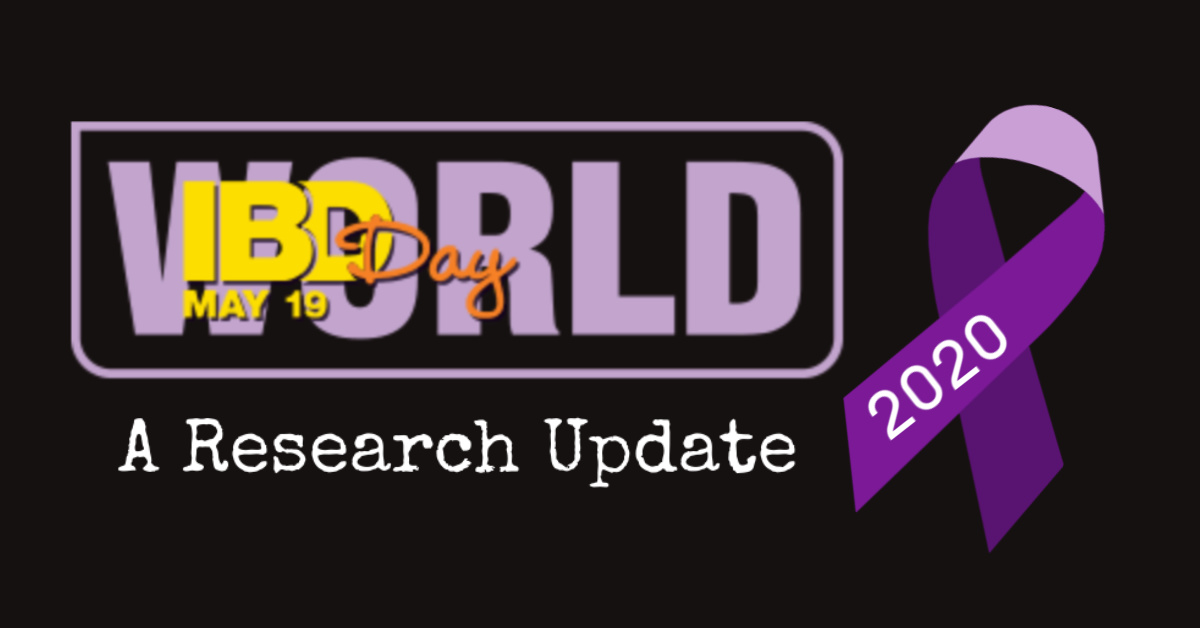
World IBD Day takes place on May 19 each year to raise awareness of the inflammatory bowel diseases, Crohn’s disease and ulcerative colitis, and to help people throughout the world who are living with these conditions find connections with each other by sharing our stories and resources. This year is significant for me in particular because I’m marking 25 years since diagnosis… and am happy to report that I feel better today than I have at any point in my long journey. In this post, I’m providing an overview of my story to this point, the key factors that have helped me really move the needle on my wellbeing, and a brief look at some of the most exciting research.
My story with Crohn’s disease
Though I’d had off and on “tummy troubles” going back to early childhood, the truly uncomfortable (and embarrassing) symptoms of inflammatory bowel disease began for me shortly after I graduated from high school and went away to college. For a while, I blamed it on dorm cafeteria food and just suffered silently. Once I finally did tell my doctor what was happening, diagnosis came quickly (in 1995, the summer I was turning 20). I immediately asked if I needed to change my diet, but when the doctor said there was no evidence that would make any difference, I accepted that and began taking the medications that were offered. Those medications were eventually replaced with stronger medications and eventually the first biologic medicine, Remicade.
For the rest of my 20s, I coped with Crohn’s disease by mostly ignoring it. Flares were managed with medication and my yardstick for whether I was doing well or not was simply if I got through each day without anyone else knowing I was “sick,” never really thinking about long term ramifications of uncontrolled disease. For the most part, it worked. I graduated from college and got a master’s degree in educational psychology, had an active social life, a demanding career, traveled the world and met my future husband and got married.
See my post celebrating the first 20 years of living well with Crohn’s disease.
Then in my early 30s, I finally had to face the reality that all of those flares and constant inflammation and caused severe strictures in my large intestine and underwent surgery to prevent future complications. Unfortunately, the recovery from that surgery didn’t go well and many complications followed anyway, culminating in 6 more surgeries over a 2 year span. When it was over, I’d lost about a quarter of my small intestine along with those portions of my large intestine. Then the extra-intestinal manifestations of Crohn’s disease really became a problem for me, including chronic joint and muscle pain, frequent kidney stones, and anemia so bad that I needed blood transfusions.
Finally, in 2013 I was exhausted and desperate and returned to that original question. Do I need to change my diet? Again, my doctor said there was no evidence that diet contributed to Crohn’s disease, but he also said that it probably “wouldn’t hurt” to experiment and see if I could at least reduce my symptoms. With my doctor’s blessing, I began first to experiment with the Specific Carbohydrate Diet (SCD), then transitioned to a dairy-free “paleo” diet, and then finally discovered the early pioneers who were developing and fine tuning a way of eating that became known as the Autoimmune Protocol (AIP).
See more about my health crisis and recovery here.
What is AIP?
In a nutshell, AIP is an elimination and reintroduction diet. But it is also much more than that! To be truly effective, AIP also requires a high level of nutrient density in the foods that you do eat. It also works most effectively when paired with lifestyle factors, like managing stress and getting enough sleep. Ultimately the goal of AIP is to reintroduce foods, one at a time, until you’ve determined the personalized and least restrictive diet that helps you maintain your health for life.
To learn more about AIP, see this blog post, What is AIP? The Definitive Guide.
Is the efficacy of AIP supported by research?
When I started using AIP back in 2013, no research had been done on its efficacy in regards to IBD or any other condition at that point. That’s not to say that AIP was merely a bunch of random guesses, of course! The principles behind the approach were based on scientific knowledge, including lab research and applying scientific theory and reasoning. The definitive guide to AIP was published that year as The Paleo Approach by Sarah Ballantyne, PhD (don’t let the name fool you; “paleo diet” was a popular search term in 2013 and it is clear the book’s publishers were trying to ride that wave to get visibility, but the book is 100% focused on defining and explaining what is now mostly independent from the its origins in the “paleo diet” world and is now known widely as AIP).
In 2015, Dr. Gauree Konijeti, the Director of the Inflammatory Bowel Disease Program Division of Gastroenterology at Scripps Clinic in La Jolla, California was introduced to AIP by one of her patients, who had adopted the protocol independently. Intrigued, Dr. Konijeti decided to undertake a medical study of AIP to evaluate its potential efficacy for patients with Crohn’s and ulcerative colitis. Those study results were published in 2017 in the peer reviewed journal Inflammatory Bowel Disease and reported that clinical remission was achieved by week 6 by 73% of study participants, and all of those maintained clinical remission during the maintenance phase of the study.
As an extension of that study, the researchers at Scripps Clinic also looked at gene expression to better understand the role that diet plays in inflammatory disease. They wanted to know if my doctor’s view that diet modifications could help reduce symptoms but nothing more was correct, or if there was evidence that inflammatory pathways were actually being modified as a result of diet.
This follow-up research was published in the Crohn’s & Colitis Foundation’s peer reviewed journal, Crohn’s and Colitis 360 in late 2019. Gene expression is a complex topic, but the simple way to think of it turning genes UP and turning genes DOWN, both of which contribute to various states in the body. The study discovered that 324 genes were changed in the subjects studied, with 167 being downregulated after the adoption of AIP and 157 being upregulated, likely representing decreased autoimmune inflammatory response, positive modulation of autoimmune inflammatory response, and mucosal healing including DNA repair that suggested positive restoration of cellular integrity and function.
Resources to learn more about AIP
- The AIP Summit presented by AIP Certified Coaches. This annual online event features AIP experts presenting on a wide range of topics relating to the protocol.
- The Autoimmune Protocol E-Book by Sarah Ballantyne, PhD. This up-to-date resource contains everything you need to know to understand and start using AIP today.
Interested in personal nutrition support?
Consider working with me! Since dietary change helped me discover new levels of wellbeing and improve my life so dramatically, I went back to school and became a nutritional therapy practitioner and health coach so I could help other people who want the same. Since 2017, I’ve worked with 100s of individuals with a variety of diagnoses. Learn about my approach here.


